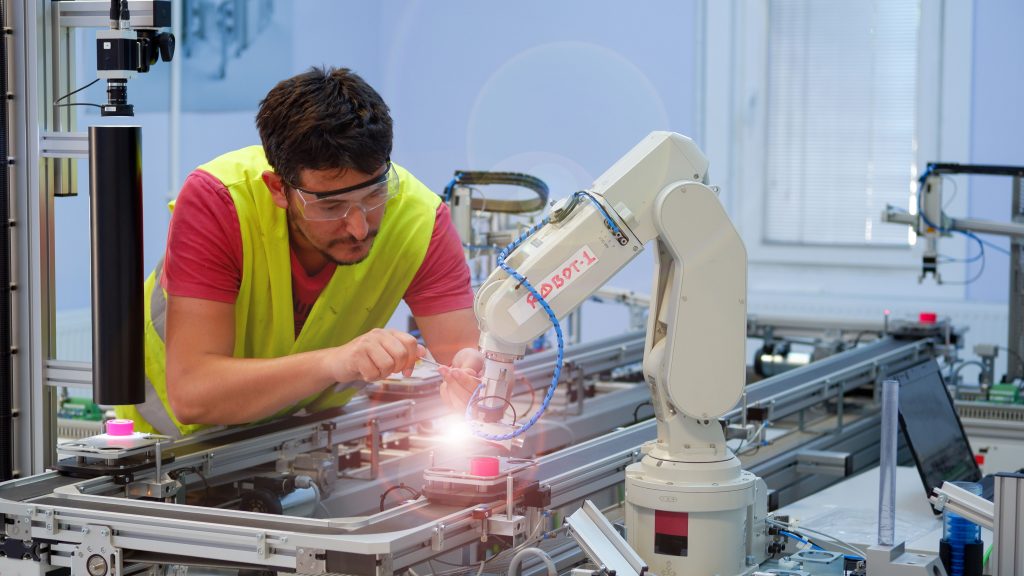With skill shortages due to worsen over the next decade as a large portion of the industry retires, Director for Infrastructure at the Royal Institution of Chartered Surveyors (RICS) Anil Sawhney explains how to meet our growing infrastructure needs
This article was originally published on the Global Infrastructure Hub’s blog, which you can read here

The industry already faces an enormous skills gap given the need to build 13,000 buildings each day between now and 2050 to support an expected population of 7.7 billion people living in cities, RICS’ Future of Work in Construction Report finds.
This, in addition to the large proportion of the construction industry’s workforce that will retire over the next decade, brings about a massive skills shortage that will drive up costs and reduce efficiency and profitability.
As an industry, we have identified a critical need for digital transformation in the design and construction of infrastructure, but we have not considered who will be ‘teaching’ this to the future workforce.
We need a pipeline of skilled graduates with the capability to consider a project from the design stage through to the end, and to effectively integrate data and technology throughout.
We also need managers to re-skill and re-tool to upgrade their expertise. For example, if you were to ask today’s project manager to deploy robots that interact with other machines and humans, most project managers would lack the skills needed for that environment.
Outsourcing not an option
While technology deployment and data gathering can always be outsourced to technology companies and service providers, this results in the delivery of fragmented solutions.
For this reason, it is critical that data and technology skills are embedded within the organisation rather than relying on outside experts.
What we are looking for are model-driven integrated solutions across the supply chain, the project lifecycle and between projects.
For example, if we use a drone to inspect a single bridge in isolation of the whole system, there is no ability to use that data to benefit other assets or processes. As an industry, we often make the same mistakes from project-to-project, better data and technology integration can help avoid that.
To realise the their full benefits you must be able to draw insights from the data and apply them to make better decisions. This can only happen when you have the domain knowledge and the organisational context – something that an external company will not have.
The Chief Data Officer will be responsible for creating the wisdom that will help project teams drive better performance and help avoid decisions that are blockers or lead to bad performance.
The data officer within an organisation will help convert data into information, knowledge, and understanding. Data is central to the digitalization of our sector. Therefore, we must focus on common principles and standards and value data and demand data-enriched processes, practices, and assets.
Challenges
Robotics or automation will be the biggest challenge. None of our engineering programs teach mechatronics, robotics or analytics in a holistic way.
Currently, the industry is utilising robotics and automation skills developed for the manufacturing sector rather than for construction, and this is a gap that needs to be bridged.
For example, a robot designed for an Amazon warehouse is unlikely to be suitable on a dusty construction site. Workers in robotics and automation need expertise specifically focused on solving problems for the construction industry.
We jointly need to work on a competency map and determine the skills needed to deliver the future of infrastructure. Industrialised construction, Construction 4.0 and InfraTech are some of the themes that we must address as set ourselves on the right path.
This is where the public and private sectors need to partner with academia, as the right skills and competencies may not be developed if this was left to academia alone. Public and private sector partners will provide the perspectives on the entry pathways into the profession and give visibility over the skills and competencies that are in demand.
Next steps
RICS is working with technology providers, our chartered members, academia, and various construction programs to determine how skills for these new roles can be incorporated into curricula within the universities.
As a profession we must evaluate and review the ways in which the professionals of the future join the profession to ensure they remain relevant – now, and in the future.
We must also recognise that lifelong learning is crucial to developing and enhancing competencies. As we create new entry paths and expand the profession in emerging markets, we will only succeed if at the same time we champion diversity within the industry.




